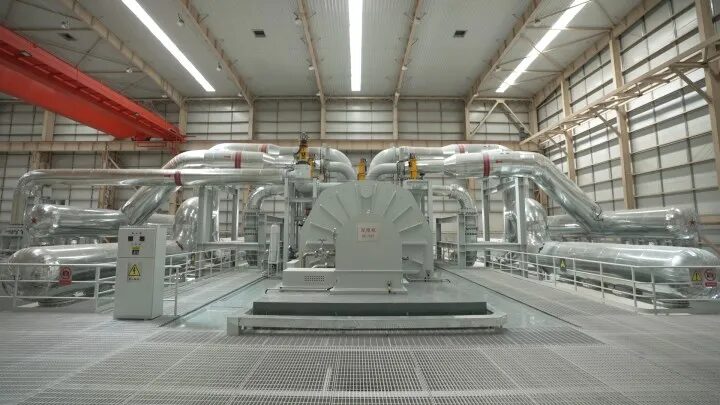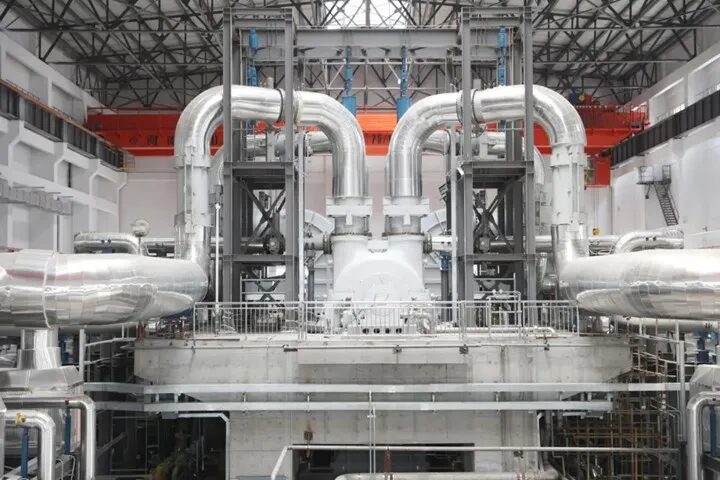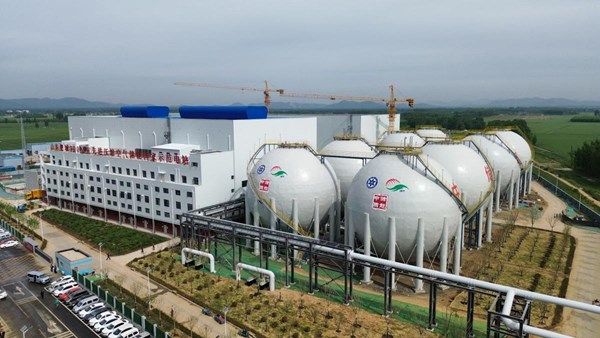In China, the world’s largest compressed air energy storage (CAES) system has been brought online. The project, which cost several hundred million dollars, utilizes an underground salt cavern for its massive capacity. Zhongchu Guoneng Technology Co. (ZCGN), one of China’s leading CAES developers, recently completed the construction of this 300 MW CAES facility, marking it as the largest CAES system globally.

What is Compressed Air Energy Storage (CAES)?
For those unfamiliar, CAES is an energy storage technology that stores excess electrical energy for later use when demand is high. These systems use air compressors to store air at high pressure in underground caverns (often 500-800 meters deep, such as old salt mines or large caves) or specially designed tanks. During storage, electrical energy is used to run the compressors. When energy is needed, the compressed air is released to drive turbines, converting the energy back into electricity. CAES systems are particularly suitable for storing energy from renewable sources like wind and solar, or surplus electricity from the grid.

China Constructs the Largest CAES System
The 300 MW CAES facility built by ZCGN in China now holds the title of the largest such system in the world, surpassing the previous record of a 100 MW project, also in China, completed in 2022. The new facility is reported to be 30% cheaper and more efficient, with an overall efficiency of 72%. The $207.8 million facility has a storage capacity of 300 MW/1,800 MWh and covers an area of approximately 100,000 square meters. It can provide uninterrupted power for up to six hours and supply electricity to between 200,000 and 300,000 homes during peak demand periods. The station is located in an underground salt cavern with wells reaching depths of up to 1,000 meters.

Potential for Similar Projects in Turkey
The salt blocks under Turkey’s Tuz Gölü (Salt Lake) could potentially be used for similar CAES facilities. These blocks are currently used to store natural gas imported from Russia and Iran. About 10 years ago, 12 artificial salt caverns with a capacity of 1 billion cubic meters of natural gas were constructed. The first operations for storing natural gas at depths of 1,100 to 1,400 meters began in 2017. A similar approach could be applied for CAES systems.

Environmental and Economic Benefits
Returning to the application in China, the facility is expected to generate 600 TWh of electricity annually, saving approximately 189,000 tons of standard coal consumption. Additionally, it is projected to reduce carbon dioxide emissions by around 490,000 tons per year. The project is anticipated to pay for itself within about seven years.
This development represents a significant step forward in energy storage technology, showcasing the potential for CAES systems to provide reliable and sustainable energy storage solutions. What are your thoughts on this groundbreaking technology? Share your insights in the comments below.

